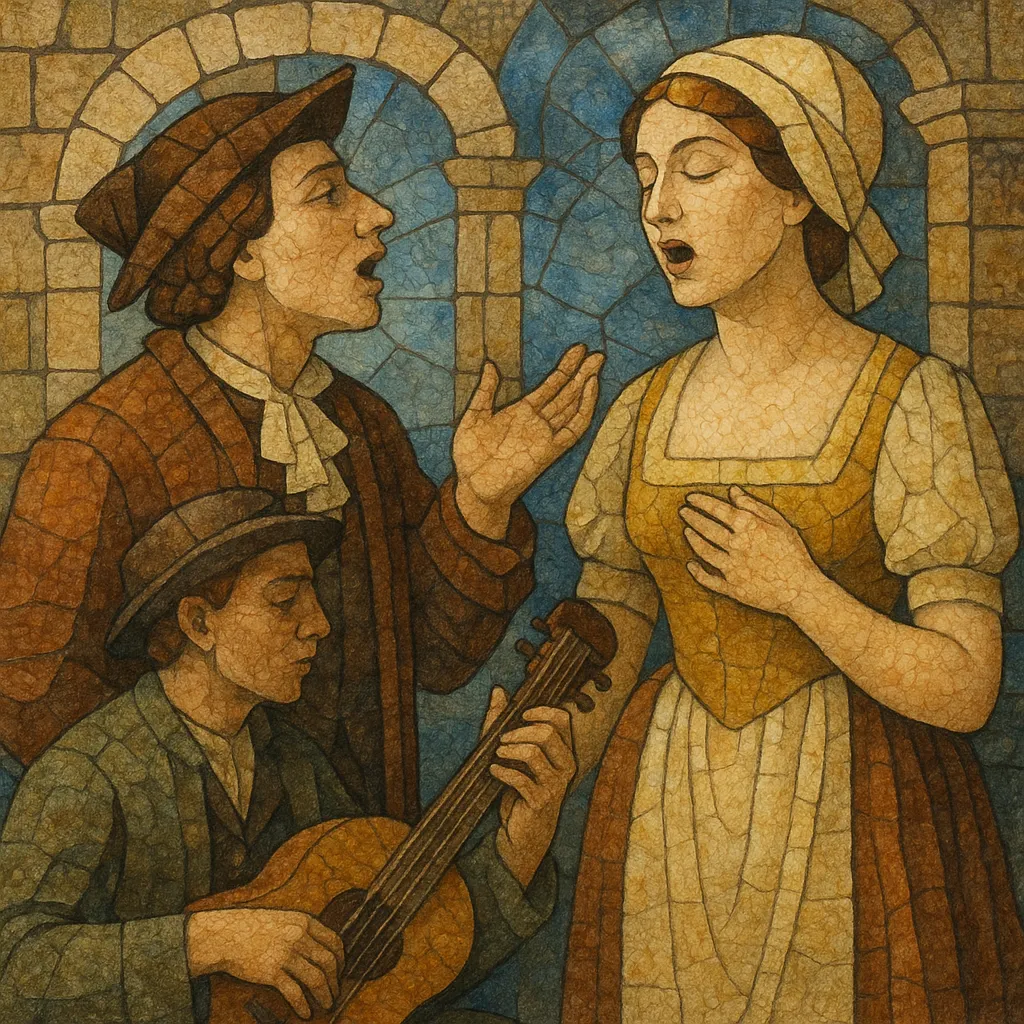Singspiel is a German-language musical stage genre that alternates spoken dialogue with musical numbers such as arias, ensembles, choruses, and finales. Unlike through‑composed opera, the plot advances through spoken scenes, which makes the style theatrically agile and accessible to broad audiences.
Musically, Singspiel blends tuneful, folk‑like melodies and clear Classical‑era harmonies with theatrical flair. Subjects range from domestic comedy to adventure, exoticism, and magic (Zauberoper), and the tone can move from light and humorous to noble and sentimental. It flourished in public theaters across German lands and Austria, where it became closely identified with Viennese stages in the late 18th century.
Singspiel emerged in German-speaking lands during the Enlightenment, especially in the 1760s–1770s. It drew on imported models with spoken dialogue—most notably English ballad opera and French opéra comique—while infusing German poetic and song traditions. Johann Adam Hiller’s Leipzig productions are often cited as foundational, establishing a template of catchy, strophic songs, simple yet effective Classical harmony, and lively spoken scenes.
In the 1770s–1780s, Vienna became a crucial center. Emperor Joseph II promoted a German National Singspiel, commissioning works from composers such as Ignaz Umlauf and Antonio Salieri. The genre reached international stature with Wolfgang Amadeus Mozart’s Die Entführung aus dem Serail (1782) and Die Zauberflöte (1791), which combined popular appeal with sophisticated musical craft and theatrical spectacle.
Early 19th‑century German Romantic opera absorbed Singspiel’s alternation of dialogue and numbers, supernatural themes, and folk color—exemplified by Weber’s Der Freischütz (1821). Over time, some works replaced spoken dialogue with recitative or more continuous music, but the Singspiel DNA remained vital. Its emphasis on spoken scenes, memorable tunes, and ensemble finales fed directly into Viennese operetta and, eventually, modern musical theatre, where the dialogue‑song alternation continues as a core dramatic engine.


